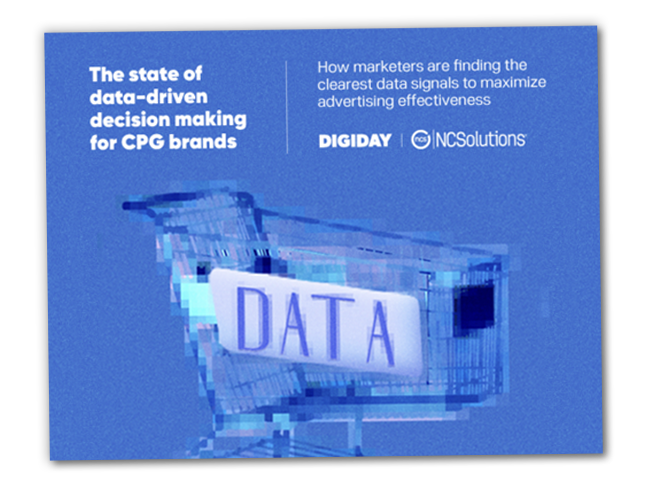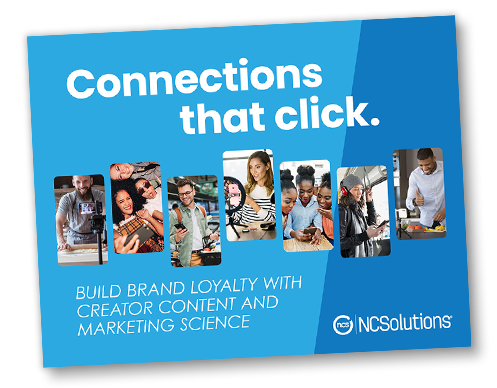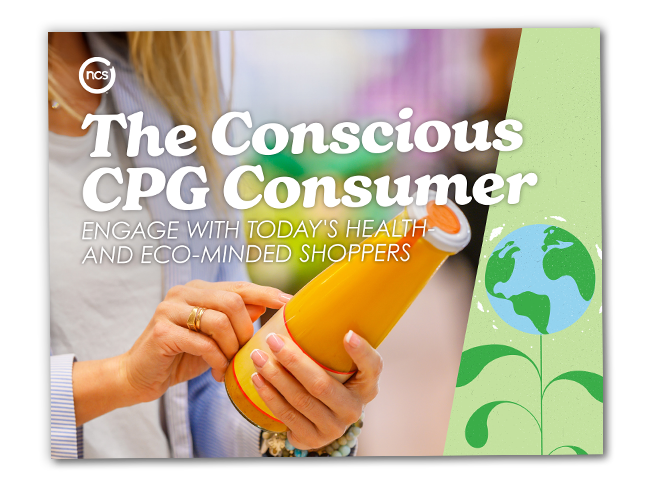Menu

By Deirdre McFarland, Chief Marketing & Communications Officer
Granola. Swipe, beep. Paper towels. Swipe, beep. Hot sauce. Swipe, beep.
Oh, the barcode! As a consumer, I love how it makes checkout fast and convenient. As a marketer, though, whenever I hear the beep, I think about how these symbols are points of data - capable of holding all kinds of information for both brands and retailers.

You might be wondering why I’m writing about barcodes. Last year, the barcode had its 50th anniversary, and today is another noteworthy day – the 50th anniversary of the first scan.
Recently, I had a chance to talk to Amber Walls, Senior Director, Global Standards, at GS1 US, about the UPC barcode history and today’s milestone.
Q:
DEIRDRE: Let’s start by talking about GS1 US. What is the organization and what role does it play in standardizing UPC barcodes?
A:
AMBER: GS1 US is the neutral not-for-profit information standards organization best known as the administrator of Universal Product Code (UPC) barcodes. We’re known as the “barcode people,” and we’re part of a much larger global federation.
Over the last 50 years, we’ve strived to seek out industry problems, figure out where the pain points are, and find solutions that help industry. Whether you're in healthcare, the CPG food world, food service or government, we define equalizers and standards to help business move forward in a meaningful, scaled way. We’re addressing problems that existed back in the 1970s, as well as new challenges in 2024.
Q:
DEIRDRE: Before we dive into the significance of today, tell me something about you.
A:
AMBER: I am a thorough, absolutely complete barcode nerd. My entire office is filled with barcode memorabilia from the last 50 years.
What’s been really interesting for me when talking to brands, retailers and solutions providers is just how much one-dimensional (1D) barcodes, like UPCs, have been part of their lives. As someone in Standards who arrived late in the development of the UPC, I’ve learned this is an innovation that changed many lives.
Q:
DEIRDRE: What makes June 26, 2024, so special?
A:
AMBER: June 26 is Scanniversary, the 50th anniversary of the first scan of the UPC barcode, which happened at a Marsh supermarket in Troy, Ohio. This event kicked off what is now billions and billions of scans of European Article Numbers (EAN) and UPC barcodes. It also led to other technology innovations, like the QR code.
This first scan proved the barcode worked and helped us get into a mindset of “we can do business differently” and “we can shop differently.”
My favorite 50th anniversary stories are about what it was like to grocery shop or to buy a T-shirt before the barcode.
For instance, store associates would carry around a can of Aquanet, which they’d use to rub off the old prices before stamping new ones on the items. New prices also needed to be manually keyed into systems.
Today, when we look at self-checkout, we see people scanning 40 to 70 items per minute.

Q:
DEIRDRE: Let’s talk about how retailers and manufacturers are thinking about using UPC barcodes today.
A:
AMBER: Whether you're a brand or retailer, there's a lot of activity around trying to figure out what's the best type of barcode or the best type of technology to get the right data to the right place at the right time.
There's a ton of value still being received today from these simple bars and spaces. Whether it's a price lookup or having that unique identifier to pull information from, there are endless possibilities when you have standardized data.
I was sitting next to somebody in the airport earlier who was tracking in their fitness app.
They were just getting the barcode on their product and the app is actually populating all the nutrition information for that.
And in terms of the retailer space, you'll have retailers building UPC barcodes into their “buy online/pickup in store” service. The store’s staff will scan each item to be sure the right product is in the cart and use the barcode to ensure they’re finding good substitutes for products based on what might be missing in store. That's all powered by the 1D barcode. This will continue to evolve and grow.
Q:
DEIRDRE: I’m just thinking about the scale of that data. Here at NCS, we take in trillions of transactions so we can model purchasing behavior for all U.S. households. That’s a lot of product information to manage.
Thanks to the unique information stored in every barcode, we’re able to identify and understand the attributes of CPG products so we can better organize items into categories, understand household shopping behavior, and talk to manufacturers in their own language.
Fortunately, we have machine learning to accelerate our modeling approach and deliver the precision and granularity advertisers need to make smart data-driven advertising decisions.
But we can’t do any of this if the data isn’t standardized in some way. Which brings me to GS1 Standards. What are they and how do they impact product information?
A:
AMBER: GS1 Standards encompass a lot of things. We call them the global language of business. Absolutely, barcodes and what those barred lines and spaces mean is a big part. But what's really behind that is the information.
Embedded in every UPC barcode, there's a product and the global trade item number (GTIN). Let’s say a brand is trying to sell hot dogs. The barcode can tie sustainability information, certifications and nutrition details to the item. No matter where it's being looked up, that identifier is the tie-in for everything.
There are lots of other standards that complement what we see in barcodes today and that continue to build on them. Expiration dates and batch lot numbers provide actionable data that businesses can use to benefit their own supply chains as well as their customers.
There are image-based standards that ensure when you're looking at something online, it's actually what that product is. New video standards are out. There are whole sets of things that have very little to do with the product directly – in terms of standards around identifying parties and locations.
It's a really cool system and, definitely since 1974, it continues to evolve over time.
Q:
DEIRDRE: What’s next on the horizon for the barcode?
A:
AMBER: We get asked all the time: Is the UPC going away? It's absolutely not.
We're still seeing growth in certain markets and areas where it's being newly adopted because there's a huge amount of value there.
What's changing and evolving - and enabling new potential for businesses, consumers, patients, and others – is taking the information that's been in the barcode all along and doing more with it.
You'll hear a lot about Sunrise 2027.
Think about the QR code you see on billboards, T-shirts, menus and children's homework. Not all QR codes are created equal. QR codes powered by GS1 will be web-enabled to link to more product information for consumer engagement and will also provide the GTIN so that they can go beep at check out. They will enable an instant consumer experience. You can embed things like an expiration date to stop the sale of an expired good. Or include a batch lot number to help find products that might be part of a recall. We’re seeing a need to have more of the right data in the right place.
But these symbols aren't going to replace the 1D barcode. We're seeing artificial intelligence (AI) use that humble 1D barcode to pull information and help develop systems. For example, you might have a packaging change or some new product that the AI hasn't seen yet. Businesses can look at the barcode and pull the encoded GTIN – the product identifier – and train their system.
I probably have about 50 years before I retire. The 1D barcode definitely will be around long after I am, I’m sure!
DEIRDRE: Powerful stuff! We’re looking forward to seeing how it all plays out. Thanks for taking the time to talk!
Curious about what products health- and eco-conscious consumers are scanning at the store? Discover our latest insights to learn how you can engage with today’s mindful shopper.

Subscribe for Updates
GET INSIDE THE MINDS OF CPG BRAND MARKETERS
Learn about their data-fueled strategies
SNAG YOUR COPY OF THE REPORT TODAY
WONDERING HOW CONSUMERS RESPOND TO INFLUENCER MARKETING?
See how creating content drives results
DOWNLOAD YOUR COPY NOW
WANT TO KNOW MORE ABOUT HEALTH AND ECO-MINDED SHOPPERS?
Get CPG insights to engage your buyers
ACCESS THE E-BOOK TODAY


.png)
.png)
